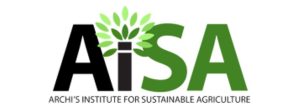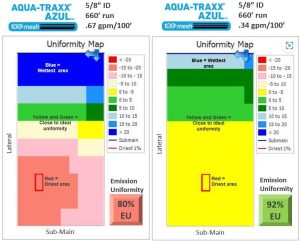Original post by theindependent.com (Robert Pore)
For 36 years, Husker Harvest Days has been the premiere agricultural show for the technology that drives irrigation. This year, a subsurface drip irrigation (SDI) system has been installed at the show site to irrigate a cornfield and part of the grass parking lot south of the exhibit area.
Show Manager Matt Jungmann said it’s the first time an SDI system has been installed at the site. He said he’s pleased with the results of the SDI, which Western Irrigation of Garden City, Kan., installed in the spring. Jungmann said last year’s drought was hard on the six-acre parking lot, but the SDI has helped restore the grass. He said corn harvested on the ground with the SDI system is averaging more than 200 bushels per acre.
The SDI drip lines are on 60-inch centers and buried 14 inches deep. The system is fed by a 300-gallon-per-minute well powered by a submersible pump and applies water directly to the crop’s root zone using polyethylene tubing.
The new system, along with other innovations in irrigation technology, are helping farmers conserve water while applying management practices that improve crop production. Technology is also playing a bigger role each year in irrigation, such as connecting a control panel wirelessly to a computer or smartphone so the operator can manage the system remotely.
While companies such as Western Irrigation have been installing SDI systems throughout the Great Plains, the University of Nebraska-Lincoln has been researching SDI systems throughout the state.
The SDI system installed at the Husker Harvest Days site has a self-cleaning filtering system to keep fine sands out of the drip lines. Western Irrigation estimates that SDI, because of its efficiency and water delivery uniformity, can save a third of the water applied by a center pivot and two thirds of the water applied by gravity irrigation.
A prolonged drought last year limited many areas of the state to less than 50 percent of annual precipitation. While dryland corn yields suffered, irrigated corn helped lift corn production to nearly 1.3 billion bushels.
But irrigation development over several decades has diminished groundwater supplies and forced governmental entities to regulate groundwater use throughout the state.
The realization that groundwater is not a limitless resource has made finding more efficient ways to irrigate a priority. In Nebraska, nearly 9 million acres of principal cropland receive water through irrigation.
“We are looking at irrigation systems and finding ways to make them more efficient, such as different crop rotations, where different crops use different amounts of water to get their yield,” said Chuck Burr, extension educator at the West Central Research and Extension Center in North Platte.
Throughout the state, sprinkler and furrow irrigation are the main ways groundwater is delivered to crops. Both systems have seen improvements over the years, such as low-pressure drop hoses on center pivots, for better efficiencies in groundwater delivery.
Burr said UNL has also been researching SDI systems, where the irrigation tubing is buried under the ground and the water is metered through that tubing to the crops.
“It is a fairly new concept (SDI systems) to Nebraska, but it has been used in California in vegetable production for quite a few years,” he said.
There, Burr said, the drip tape is laid on the surface, but in Nebraska, it is typically buried 12 to 14 inches under the soil surface, where it is left for as many as 20 years.
How efficient SDI can be, Burr said, depends on how it is managed.
“Subsurface drip can be very efficient, if it is managed properly, so really the key to subsurface drip is that we are not wetting the soil surface in applying the water, so we don’t lose water to evaporation,” he said.
When water is applied through a center pivot or furrow system, Burr said, some of that water evaporates.
“That is where the subsurface drip is more efficient as we don’t have that surface evaporation,” he said.
Burr said they are happy with the results of the research being done by UNL.
“The main concern with SDI right now is the price,” he said. “It is very expensive, and you are probably not going to see a lot of full sections of land put into subsurface drip.”
Burr is optimistic that SDI systems will continue to expand in Nebraska, especially as groundwater becomes more scarce.
“If the technology becomes cheaper and the water becomes more valuable, we will see more SDI systems being installed,” he said.
Having an SDI system at HHD is a good step in educating producers about a new alternative. Along with the many irrigation companies represented at HHD, the University of Nebraska research and extension experts will be available at Husker Harvest Days.
“Raising Our H2O IQ” is the theme for UNL Institute of Agriculture and Natural Resources exhibits at this year’s show.




